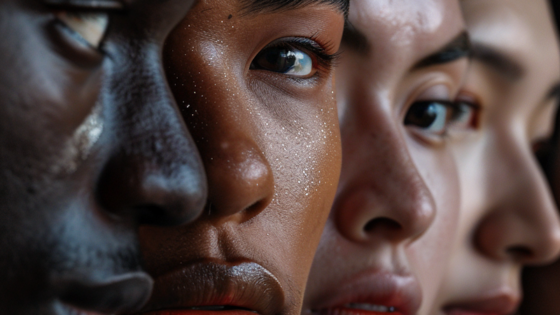on
BY SIMONE J. SMITH
Kwanzaa was conceived and born in the womb, work and transformative struggles of the Black Freedom Movement. And thus, its essential message and meaning was shaped and shared not only in Sankofa initiatives of cultural retrieval, of the best of our: views, values, and practices as African peoples.
It was also shaped by that defining decade of fierce strivings and struggles for freedom, justice and associated goods waged by Africans and other peoples of color all over the world in the 1960s. Kwanzaa thus came into being, grounded itself and grew as an act of freedom, an instrument of freedom, a celebration of freedom and a practice of freedom.
“KWANZAA, FREEDOM, JUSTICE AND PEACE: PRINCIPLES AND PRACTICES FOR A NEW WORLD”
- MAULANA KARENGA (2023)
Historians say that it was in late 1965, or early 1966, Terry (Baraka) Damu, the nine-year old daughter of a US Organization member made a frustrated observation that Black people did not have their own holiday. According to the stories, Terry insisted that since everybody else had a holiday, Black people should have a holiday, too.
Soon after, Dr. Maulana Karenga organized a monthslong research effort where Kwanzaa was conceived and defined, leading to its first celebration in December 1966 at an apartment home in Los Angeles.
The celebration takes place from December 26th to January 1st each year and is celebrated here in Toronto. I have a question to ask you readers; how many of us celebrate Kwanzaa? When was the last time you went to a Kwanzaa celebration event? How many Kwanzaa celebration events happened in Toronto in 2023? In the last few years as Chief Correspondent of the largest Caribbean Newspaper in Canada, I have not received an email for a Kwanzaa celebration, not once!
It made me think; we are a mosaic of cultures, a synergy of religions, Canada is one of the most revered countries in the world, with a large African-Caribbean population living in the GTA, and yet, as Caribbeans, some of us still find it hard to embrace African traditions.
It made me think; why had my parents not taught me about African cultures and traditions; yes, I know many Jamaican traditions, but not many African ones. I know I am not the only one who resonates with this sentiment. So, what could be the reason for this, and how do we now start opening up ourselves to the wisdom of our ancestors.
I have found that people living outside Africa may find it challenging to connect with African traditions due to the physical and cultural distance. The traditions, customs, and values may feel unfamiliar and distant, making it harder to incorporate them into daily life. African Caribbean individuals living outside of Africa often navigate multiple cultural identities. We face challenges in integrating African traditions with the dominant culture of our current location, and this can lead to a sense of cultural dissonance.
Then there are the stereotypes and misconceptions about Africa; you know what I am talking about. The comments, “I am Jamaican, I am not African.” Sigh! Overcoming negative stereotypes and fostering a genuine understanding of African cultures may require additional effort on a lot of our parts.
This year, I want to re-introduce what the celebration of Kwanzaa is all about. I want to specifically speak to the seven principles known as the Nguzo Saba. Each day of the celebration is dedicated to one of seven principles. The principles are:
Umoja (Unity) – December 26th: This principle emphasizes the importance of unity within the: family, community, nation, and race.
Kujichagulia (Self-Determination) – December 27th: This principle encourages individuals to define and speak for themselves, determining their own destiny and identity.
Ujima (Collective Work and Responsibility) – December 28th: Ujima focuses on building and maintaining community and working together to solve problems.
Ujamaa (Cooperative Economics) – December 29th: This principle emphasizes the importance of building and supporting businesses within the community and maintaining economic stability.
Nia (Purpose) – December 30th: Nia encourages individuals to set personal and community goals that are beneficial to the larger community.
Kuumba (Creativity) – December 31st: Kuumba calls for creativity and the use of individual and collective talents to make the community more beautiful and beneficial.
Imani (Faith) – January 1st: The final principle, Imani, focuses on believing in people, families, communities, and the triumph of righteousness.
What I appreciate about the principles is that they are simple to understand, and according to the founder of Kwanzaa Dr. Maulana Karenga, “It reaffirms the right to resist all forms of unfreedom, injustice and oppression.”
This was written in his most recent address to Africans living in the diaspora. He shared some other thoughts that resonated,
“It reaffirms Nana Haji Malcolm X’s teaching that Freedom is essential to life itself. Freedom is essential to the development of the human being. (And) If we don’t have freedom, we can never expect justice and equality. Indeed, only after freedom do justice and equality become a reality in the fullest sense of the principle and practice.”
Teachings out of Africa stress on the importance of building the good world we all want and deserve. It teaches the centrality of togetherness in our constant quest for an inclusive freedom, justice and peace, and it reaffirms the reality that only in collective work and responsibility can we achieve freedom, ensure justice and build the peace and security of persons and peoples we all long for and struggle for all over the world.
Ultimately, the degree to which individuals outside of Africa embrace African traditions is a highly personal journey influenced by a variety of factors, and there is no one-size-fits-all experience. What I would love to see is as a community we move past our ignorance and realize that many of our traditions and rituals are rooted in Ancient African traditions, and we must learn how to embrace and incorporate these traditions in our everyday lives.
Until next year; Happy belated Kwanzaa Toronto!
Stay in the loop with exclusive news, stories, and insights—delivered straight to your inbox. No fluff, just real content that matters. Sign up today!
We, as humans are guaranteed certain things in life: stressors, taxes, bills and death are the first thoughts that pop to mind. It is not uncommon that many people find a hard time dealing with these daily life stressors, and at times will find themselves losing control over their lives. Simone Jennifer Smith’s great passion is using the gifts that have been given to her, to help educate her clients on how to live meaningful lives. The Hear to Help Team consists of powerfully motivated individuals, who like Simone, see that there is a need in this world; a need for real connection. As the founder and Director of Hear 2 Help, Simone leads a team that goes out into the community day to day, servicing families with their educational, legal and mental health needs.Her dedication shows in her Toronto Caribbean newspaper articles, and in her role as a host on the TCN TV Network.














steven
January 26, 2024 at 9:58 am
Article :As Caribbeans, Some Still Find it hard to embrace African Traditions: I can understand how the people of the Caribbean have difficulty relating to Africans, who often look like each other, but practice uniquely different cultures and traditions. If someone who may dress and act like a North American Indigenous can be called a cultural appropriator, so to some one from the Caribbean acting as a African. Going back to your roots is a gift, but allowing your roots to transform you into something other than what you are maybe a crime. Why do many North American Blacks seem to be prejudicial to African Blacks? They are simply different. Lets look at each other as humans, and stop labelling ourselves.